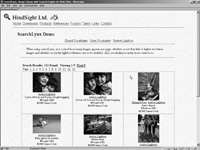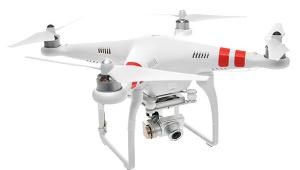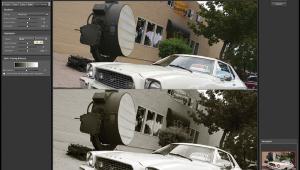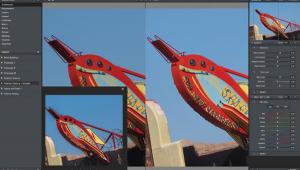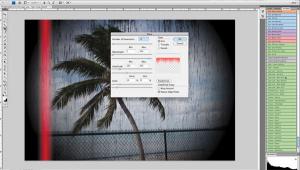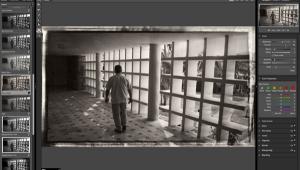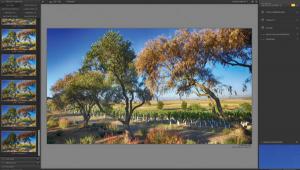Digital Innovations
The Times They Are A Changin, Digitally That Is
Take a look at the photograph of me that accompanies this month's column. Nothing remarkable, wouldn't you say? I am standing in front of the Applied Science Fiction (ASF) stand at the photokina 2000 show in Köln, Germany, last September. I was photographed by an ASF employee who used a Nikon F100 camera with a 25-80mm zoom and Kodak Gold 200 color negative film, but the output from that brief photo session was a digital JPEG file e-mailed to me back in the U.S.A. The digital capture method used was ASF's Digital Dry Film Process (DDFP) and the image itself is quite remarkable. Using the company's DDFP technology, the film was processed and analyzed on a pixel-by-pixel basis before being digitized as a TIFF, JPEG, or BMP file. In my case, the JPEG file was e-mailed to me, I saved it as a TIFF file and sent it to Shutterbug on a CD-ROM to produce what you see here. What struck me most about the DDFP image is that it has a unique "look." First there is no grain evident at all. Using Adobe Photoshop's Magnifying Glass tool to blow the image up on screen produced none, although I did notice a wayward JPEG artifact located (naturally) in my eye. A dip of the Clone brush took care of that problem in a few seconds. The image also appears to have soft wraparound lighting that I know wasn't present when the photograph was made, so the process itself appears to extract the maximum quality out of the film and situation. The overall quality of the ASF image is as good as any digital image made from film using any kind of image capture that I've tried. ASF's Digital Dry Film Process is targeted for availability in photo kiosks and minilabs in the fourth quarter of 2001. I talked with the company about processing and digitizing some of my film from a future photo session, and expect to be able to provide an update in the future. More details of the DDFP technology can be found at Applied Science Fiction's web site at: www.asf.com. |
|||
Well, we're halfway through the year 2001 and I'm finally getting used to the idea of living at the start of a new century. When we're all tucked away in the old photographers home we'll look back on this period as a time of major turmoil and exciting new opportunities in the photo world. There's new technology, new ways to view images, and new ways to take images. What has remained pretty constant is the desire of buyers of photography--magazines, ad agencies, graphic design firms, etc.--to look for the latest and freshest images. My work is subject to the same scrutiny as any other artist. If I were to stick with the style and look that made me so successful in the 1980s I surely would have a hard time finding any work. Even if I had kept my style static from the '90s I would find more and more clients looking for something newer and fresher. Don't get me wrong. Slavishly following trends and creating a raft of "me-too" images will get your portfolio bounced just as fast as a bunch of amateur snapshots. Like any artist I'm affected by the culture around me. I react to the slow but steady style shift that affects all artistic endeavors. My work has evolved over the years, even though it was hard to notice as it happened. Recently I assembled a new portfolio for my rep to show to prospective clients. The difference in styles became readily apparent. As I pulled out 10-year-old ads and replaced them with work from 2000 and 2001 I noticed a strong trend that has crept into my work--color. I don't mean bright color, I mean a strong, saturated fluid sense of color that most working pros today have to be able to create if they want to work. |
|||
New Legal-Sized Scanner Plug-In Update |
|||
Got so many plug-ins that you can't keep track of them? Germany's Harald Heim Software announced the release of Plugin Commander Pro 1.50, an application that lets you control which plug-ins are displayed in your host application. It supports 30 different plug-in types, including Adobe Photoshop, Premiere, and After Effects. You can make Photoshop and After Effects plug-ins appear anywhere in the Filter menu and effects from Photoshop compatible and some Premiere plug-ins can be viewed in a preview window, thumbnail browser, or its built-in Picture Editor. You can apply Photoshop compatible plug-ins directly to images within Plugin Commander and process one image at a time in Picture Editor or use the Batch function to apply a series of image effects to a list of images. A Batch dialog will convert different image formats and can resize and rename images at the same time. Plugin Commander is available for Windows 95, 98, Me, NT, and 2000. A free feature limited edition is available or you can purchase the real deal for $49.95 from www.thepluginsite.com/products/picopro. |
|||
Plug-In Of The Month Digital LCD Monitor Digital Film Card Reader Digital Panoramics See Me, Hear Me Selling Stock Images On
The Web There are unlimited light boxes for every visitor. In addition, searchLynx uses a variety of response methods that the researcher can use to query the site owner about a specific set of images. A copy protection feature automatically blocks the ability to use the browser's "Copy This Image" command or drag an image to the hard disk. Built-in hit reports let you monitor searches and recognize any deficiencies in the library content. Currently searchLynx requires a Macintosh server but a Windows version is planned for early 2001. This searchLynx is available for $495 per site license. HindSight's StockView software for Macintosh or Windows is a necessary part of the total package and serves as the point of original entry for all of the image data and cross-references with specialized export functions. When a researcher generates an inquiry about selected images, StockView has the built-in capability to process and track the inquiry. A demonstration site is online at: www.hindsightltd.com/hsstock/searchLynx_Home.html. |




